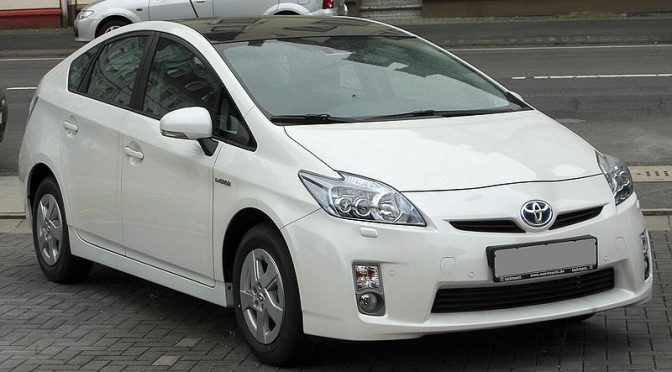Since the advent of the piston powered automobile, car companies have relentlessly promoted the idea that the piston engine would always be the king of the transportation world. Decade after decade, consumers have been mind numbingly inundated through various media outlets, that the piston engine is here to stay and nothing else exists that could possibly provide the same competitive price and performance characteristics.
For decades, the big 3 blithely ignored developing alternative drive trains or paid a mere token interest through products like the ill fated , poorly executed GM EV 1 or the Wankel rotary engine powered Mazda RX 7.
Then along came the very first mass produced Hybrid; the Honda insight. It was a small, tear drop shaped(read ugly) body with 3 doors that seated (cramped) 2 people. The car was basically an under powered, poorly executed attempt at a hybrid that got an EPA rating of 61 MPG. The first generation Honda Insight only sold a laughable 17,020 units worldwide and was quickly eclipsed by the roomier 4 door Toyota Prius. The Prius went on to win large scale acceptance by consumers and tree huggers while the first generation Honda Insight has been largely forgotten.
In the meantime, Tesla automotive successfully developed the Model S pure electric automobile, a car that shattered sales records for an all electric and even won the Motor Trend magazine prestigious, Car of the Year award. In the luxury segment, the model S has outpaced gas powered rivals such as; Mercedes, Lexus and BMW in both sales AND performance. When Tesla introduced the affordable Model 3 all electric automobile, over a quarter of a million people put a deposit down for the car, despite the fact 99% of them had not even driven it!
While Tesla was king of the luxury segment, Nissan produced the Leaf, the first affordable mass produced all electric auto that won praise from the automotive media, while winning over consumers.
One would think, after seeing the sales, the performance and the world wide accolade of the Nissan Leaf, the Tesla model S and the model 3, the other automakers would do everything in their power to transition their cars to all electric drive-trains as fast as possible. This begs the question; why is this not happening?
The simplest answer is raw greed. The internal combustion engine is complex, requiring constant maintenence and a lot of parts. The pure electric automobile on the other hand has far fewer parts and is far more reliable. The pure electric auto has no oil pump, needs no oil changes, does not have a timing belt, or starter, no fuel injection, no fuel filter, no catalytic converter, no exhaust, a minimalist transmission if any, no spark plugs or air filter. The undeniable fact is the electric auto is much cheaper to maintain and requires far fewer parts than an internal combustion engine.
The reality of fewer parts and less maintenence is exactly the problem for a giant auto company that reaps large profits off such parts and maintenence. The fact is, by keeping internal combustion powered hybrids around, they can LOOK like they care about the environment, while continuing to rake in millions in maintenence and parts sales. Unfortunately that is the very secret of why companies such as Toyota and others, have been so slow to adopt pure electric auto’s on a massive scale. Sad but true.
